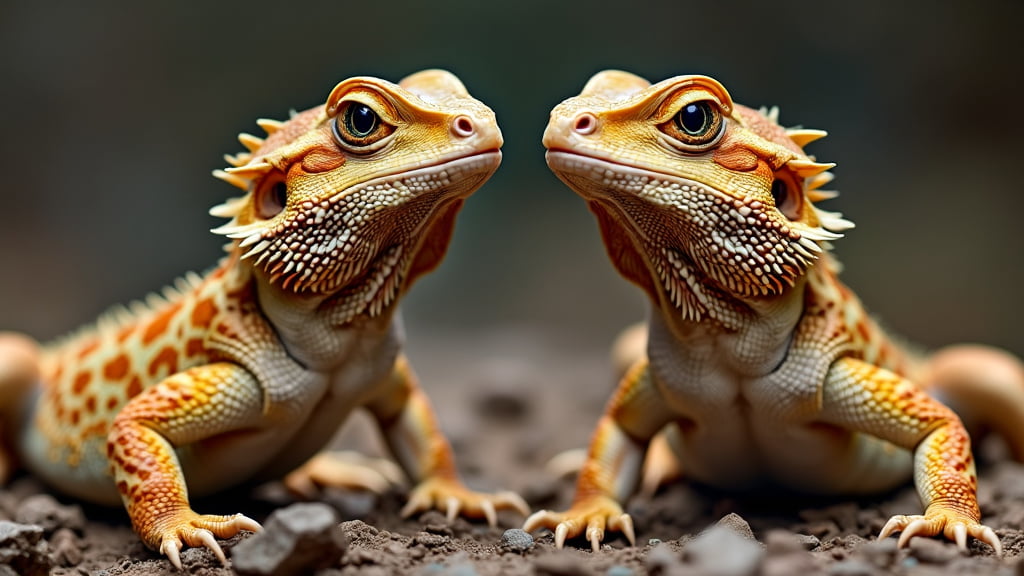Recognising Breeding Behaviour in Bearded Dragons
Bearded dragons are fascinating creatures that can become quite the captivating pets. For enthusiasts looking to delve into breeding these reptiles, understanding their breeding behaviour is crucial. From my personal experience raising bearded dragons for over a decade, I’ve gathered a wealth of practical insights that can help you identify when your bearded dragons are ready to breed. This is your comprehensive guide to recognising breeding behaviour in bearded dragons, creating a smooth journey into the rewarding world of breeding these remarkable lizards.
Understanding Breeding Season
When is Breeding Season?
Bearded dragons typically breed during the spring and early summer months. The change in daylight hours and temperature play a significant role in stimulating their breeding instincts. For instance, increasing the duration of light exposure and slightly raising the temperature can encourage breeding behaviour.
The Role of Brumation
Prior to the breeding season, bearded dragons often undergo brumation, which is a hibernation-like state. During this period, they slow down their metabolism, eat less, and rest a lot. Coming out of brumation is often the trigger for breeding behaviour to start. Think of brumation as the dragons’ way of conserving energy for the upcoming breeding season.
My first experience with brumation was nerve-wracking, but it’s completely normal. Ensuring that your dragons have a temperature gradient in their enclosure helps them navigate this natural process.
Identifying Male Breeding Behaviour
Head Bobbing and Arm Waving
Males exhibit distinct behaviours to attract a mate. One of the most notable is head bobbing—a rapid up and down motion of the head. This behaviour is often accompanied by arm waving, where the male raises one of his front legs and waves it in a circular motion. These actions serve as both a courtship and territorial display.
Darkened Beard
Another tell-tale sign is the darkening of the beard. When a male is ready to breed, his beard can turn jet black, and he flares it out to appear more dominant and impressive to potential mates and rivals. This visual display is hard to miss and is a strong indicator that breeding urges are in full swing.
Glass Surfing
Glass surfing—where a bearded dragon frantically claws at the glass of its enclosure—can also be a sign of breeding behaviour, as males become more active and restless.
Recognising Female Breeding Behaviour
Digging and Scratching
Females exhibit their own set of behaviours when ready to breed. One of the first signs is increased digging behaviour. When I noticed my female dragons incessantly scratching at the substrate, it often indicated they were preparing a suitable nesting site for laying eggs.
Swollen or Rounded Abdomen
A female ready to breed or gravid (pregnant) will have a noticeably swollen or rounded abdomen. She may also become less active and spend more time basking to regulate her body temperature.
Receptive to Male Advances
When females are receptive, they will often respond positively to a male’s head bobbing and arm waving, remaining still and lifting their tail slightly, indicating they are ready to mate.
Practical Advice and Expert Insights
Setting Up the Breeding Environment
Creating the perfect breeding environment is key to a successful breeding season. This involves:
- Appropriate Diet: Both males and females need a nutritious diet rich in calcium and vitamins. For instance, dusting their food with calcium powder is essential.
- Temperature and Lighting: Ensure the enclosure mimics natural environmental conditions, with higher basking temperatures (around 35-40°C) and extended daylight hours.
- Space: Provide enough space for the dragons to interact and retreat if needed, to avoid stress or aggression.
Monitoring and Health Considerations
Regular Health Checks
Regular health checks with a vet are crucial during the breeding season. Females in particular need close monitoring once gravid to avoid complications like egg binding. Always consult a vet if you notice any health issues.
Watching for Stress
Breeding can be a stressful process for both males and females. Monitor your dragons closely for signs of stress, such as refusal to eat, lethargy, or visible injuries.
Conclusion
Recognising breeding behaviour in bearded dragons involves keen observation and a bit of patience. From the distinct actions of head bobbing and darkened beards in males to the digging and swollen abdomens in females, these signs are your markers that breeding season has arrived. Armed with experience and this comprehensive guide, you’re well on your way to successfully breeding bearded dragons. Remember, always consult a professional vet for health concerns and ensure a supportive environment for your dragons. Happy breeding!
For additional insights and expert advice, visit our Bearded Dragon Breeding Guide.
Incorporate these tips, and you’ll be well-equipped to navigate and enjoy the fascinating world of bearded dragon breeding.

